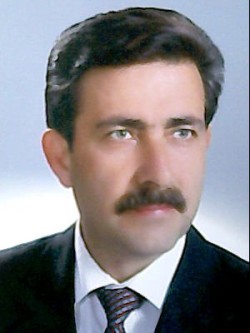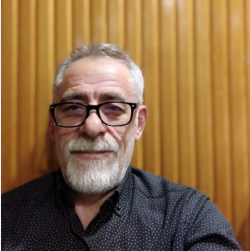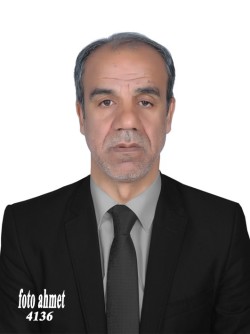
İnsanın en değerli varlığı ruhudur.
Aslında her yaratılmışın ruhu vardır.
Bu açıdan insanın çevresiyle ilişkide en çok dikkat etmesi gereken ”eşyayı ruhu ile sevmek” olmalıdır.
Zira ruhun eşya ile bağlantısında tam bir bütünlük ve uyum vardır.
Peygamberimiz (s.a.v.) eşya ile muhabbetinde ona tüm ruhuyla yönelir, ruhuyla sever ve dünyada muhatap olduğu eşyayı en çok sevdiği duygusunu karşıya geçirirdi.
Bu realiteden hareketle ilk defa Allah Resulü ile muhatap olan bedevi dünyada en çok kendisini sevdiği düşüncesinden emin olarak sahabenin içinde;
“En çok kimi seviyorsun ey Allah’ın elçisi?” sorusunu sormuştur.
Eşyanın ruhunun olduğuna en kesin delillerden birisi de “hanin-ül ciz” mucizesidir.
Mescid-i Nebevî ilk yapıldığı sırada minbersizdi. Resûl-i Ekrem, hutbe irâd buyurduklarında kuru bir hurma kütüğüne dayanırdı. Uzun müddet böyle devam etti. Bilâhare, Ashabın isteği üzerine üç basamaklı bir minber yapıldı. Artık Peygamber Efendimiz buraya çıkıp halka hitapta bulunuyordu.
Resûl-i Ekrem, yapılan minbere çıkıp ilk hutbesini okuduklarında, hamile deve ağlayışını andıran acı sesler ve ağlamalar duyuldu. Baktılar, ortalıkta ne hamile deve ve ne de deve yavrusu vardı. Ağlayan o kuru direkti. Kütüğün deve gibi ağlayışını Peygamber Efendimizle birlikte Ashab-ı Güzin de duyuyordu. Bir türlü susmuyordu. Fahr-ı Âlem, minberden inip yanına geldi. Elini üstüne koyup teselli edince sustu. Hatta hurma kütüğünün deve gibi sızlamasını işiten sahabîler de göz yaşlarını tutamamışlar, hüngür hüngür ağlamışlardı.
Evet, kuru direk Efendimizden uzak kaldı diye ses verip ağlıyordu. Üzerinde yapılan "Zikrullah"dan ayrı kaldı diye hamile deve gibi enin ediyordu. Kuru direği teselli edip susturan Resûl-i Ekrem Ashabına dönerek şöyle buyurdu:
"Eğer, ben onu kucaklayıp teselli vermeseydim, Resûlullahın ayrılığından kıyâmete kadar ağlaması böyle devam edecekti."
Hasan- Basri bu olayı talebelerine anlatıyor ve şu cümle ile konuyu bağlıyordu:
“Kuru bir hurma kütüğü Allah Resulü’nü biliyor, tanıyor ve muhabbet besliyorsa sizlerin bir hurma kütüğünden geri kalmamanız gerekiyor” derdi.
Japon bilim insanı Masaru Emoto, su kristalleri üzerine yıllar önce bir deney yapmış, bu deneyde mikroskobik ortamda ve çok soğuk bir odada su kristallerini incelemişti.
Tabi öncesinde bir kısım suya iyi ve güzel sözler söylerken bir kısmına da çok çirkin sözler sarf etmiş bunun yanı sıra değişik türden müzikler ve değişik duyguları suya yansıtmıştı.
Sonuçta güzel sözler sarf edilen su kristalleri tıpkı kar taneleri gibi düzenli ve muazzam bir şekil oluştururken kötü sözler söylenen kristaller oldukça dağınık ve birbirinden kopuk bir şekilde gözlemlenmişti.
Buradan çıkan sonuç aslında sözlerin sadece durağan su değil insan üzerinde de etkili olduğunu açığa çıkarıyor çünkü bildiğiniz üzere insan vücudunun dörtte üçü sudan oluşur. Sıradan bir su birikimine bile sözler tesir ederken insanlara ve gün içinde kendimiz için kullandığımız sözler nasıl tesir eder, bir düşünelim. Bu nedenler günlük hayatımızda olumlu bir dil kullanmayı bir alışkanlık haline getirmemiz gerekir.
Böylece kendimizde ve çevremizde canlı/cansız eşyayı ruhen severek çok olumlu değişiklikler yaratabiliriz.
Mesela, her güne şükrederek başlamak ve gün içinde kendimize ve karşımızdaki kişilere ve eşya hakkında olumlu yorumlarda bulunmak ilk adım olabilir.
Spirit of Things
A person's most valuable asset is his soul.
In fact, every creature has a soul.
In this respect, the most important thing that a person should pay attention to in his relationship with his environment is "to love things with his soul".
Because there is complete integrity and harmony in the connection of the soul with things.
When our Prophet (pbuh) had a conversation with things, he would turn towards them with all his soul, love them with all his soul, and convey the feeling that he loved the things he encountered the most in the world.
Based on this reality, the Bedouin who met the Messenger of Allah for the first time was confident in the thought that he loved himself the most in the world;
“Who do you love most, O Messenger of Allah?” he asked the question.
One of the most definitive proofs that things have a soul is the miracle of "hanin-ul ciz".
Masjid an-Nabawi had no pulpit when it was first built. When the Messenger of God delivered the sermon, he would lean on a dry palm trunk. It continued like this for a long time. Later, upon the request of the Companions, a three-step pulpit was built. Now our Prophet was coming here and addressing the people.
When the Prophet ascended the pulpit and delivered his first sermon, painful sounds and cries resembling the crying of a pregnant camel were heard. They looked and saw that there was neither a pregnant camel nor a baby camel around. It was that dry pole that was crying. Along with our Prophet, the Companions of Guzin also heard the sound of the log crying like a camel. He just couldn't keep quiet. Fahr-ı Alem came down from the pulpit and came to him. He fell silent when she put her hand on him and comforted him. Even the companions, who heard the palm tree stinging like a camel, could not hold back their tears and wept loudly.
Yes, the dry pole was making noise and crying because it was far away from our Prophet. She was mowing like a pregnant camel because she was separated from the "Zikrullah" performed on her. After consoling and silencing the dry pole, the Holy Prophet turned to his Companions and said:
"If I had not hugged her and consoled her, she would have continued crying like this after the separation of the Messenger of Allah until the end of time."
Hasan-Basri explained this incident to his students and concluded the subject with the following sentence:
He used to say, "If a dry palm trunk knows, recognizes and loves the Messenger of Allah, you should not be left behind like a palm trunk."
Japanese scientist Masaru Emoto conducted an experiment on water crystals many years ago, and in this experiment he examined water crystals in a microscopic environment and in a very cold room.
Of course, while he was saying good and beautiful words to some water, he also said very ugly words to some of them, and he also reflected different types of music and different emotions on the water.
As a result, while the water crystals to which good words were spoken formed an orderly and magnificent shape, just like snowflakes, the crystals to which bad words were spoken were observed to be quite scattered and disconnected from each other.
The conclusion from this actually reveals that words have an effect not only on static water but also on humans, because as you know, three-quarters of the human body consists of water. While words have an impact on even an ordinary accumulation of water, let's think about how the words we use for ourselves and people during the day have an impact. For these reasons, we need to make it a habit to use positive language in our daily lives.
Thus, we can create very positive changes in ourselves and around us by spiritually loving living/inanimate objects.
For example, the first step can be to start each day by being grateful and to make positive comments about ourselves, the people and things around us throughout the day.
 Erol Sunat
Biz Bizden Gidemeyiz
Erol Sunat
Biz Bizden Gidemeyiz
 Dr. Cemil Paslı
Özeleştiri mi/Savunma mı?
Dr. Cemil Paslı
Özeleştiri mi/Savunma mı?
 Mehmet Karataş
Lale Devrini Yaşıyoruz.
Mehmet Karataş
Lale Devrini Yaşıyoruz.
 İmdat Yayla
Teşkilatın İl ve İlçe Başkanlığına Liyakatli insanlar Getirilmeli
İmdat Yayla
Teşkilatın İl ve İlçe Başkanlığına Liyakatli insanlar Getirilmeli
 ŞÜKRÜ PORTAKAL
Neden Kazanamadılar
ŞÜKRÜ PORTAKAL
Neden Kazanamadılar
 Muhammed Kemal Erdem
Harunlar Köyü Adını Seyyid Harun Veli’den mi Alıyor?
Muhammed Kemal Erdem
Harunlar Köyü Adını Seyyid Harun Veli’den mi Alıyor?
 Mahmut İşcan (İlçe Milli Eğitim Müdürü)
Güzel Bak Güzel Gör
Mahmut İşcan (İlçe Milli Eğitim Müdürü)
Güzel Bak Güzel Gör
 Ayşe ÜNÜVAR :(Uzm. Psk. Dan. Eğitimci Yazar)
Eskidendi Şivlilik
Ayşe ÜNÜVAR :(Uzm. Psk. Dan. Eğitimci Yazar)
Eskidendi Şivlilik
 Duran Çölcü
Savunma Sanayinde Konya’nın Gücü Giderek Artıyor
Duran Çölcü
Savunma Sanayinde Konya’nın Gücü Giderek Artıyor
 PROF. DR. ŞAHİN AKINCI
Bir Yargı Krizi: Yargıtay’ın Şerafettin Can Atalay Kararı
PROF. DR. ŞAHİN AKINCI
Bir Yargı Krizi: Yargıtay’ın Şerafettin Can Atalay Kararı
